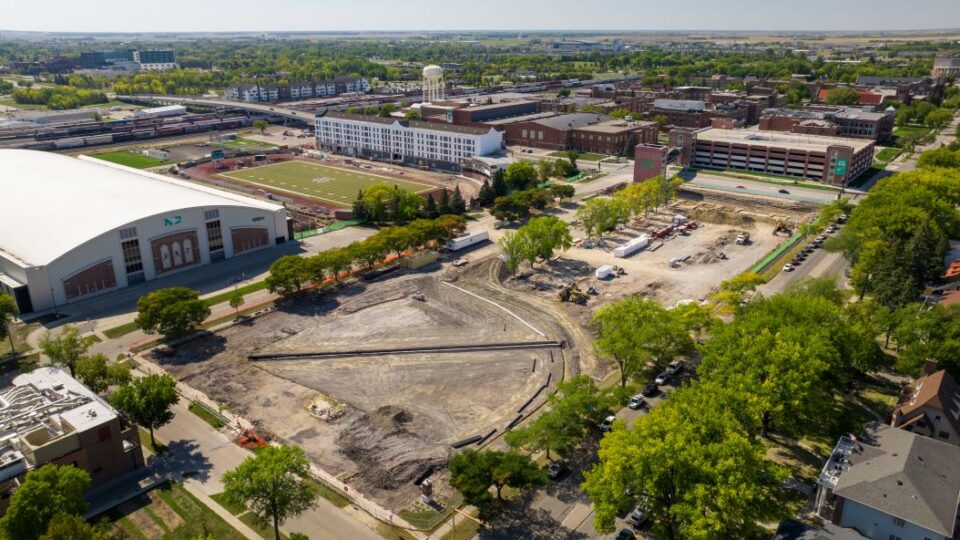Grand Forks Sanitary Sewer Replacement
Key Features
- Relocated, replaced, and expanded the outdated sanitary sewer main to support new developments and long-term growth
- Focused on strategic planning to address infrastructure challenges caused by rapid urban development
- Mitigated conflicts between the existing sewer alignment and planned construction sites
- Ensured the wastewater management system could handle projected flow rates and increased discharges
- Served numerous adjacent facilities, including the Hyslop at Memorial Village, the Fieldhouse at Memorial Village, and others
Sector
Municipal Planning & Engineering
Location
Grand Forks, ND
Status
Completed in 2024
Client
City of Grand Forks
About The Project
The City of Grand Forks initiated the Sanitary Sewer for UND East Campus Development project to address critical infrastructure challenges associated with an existing sewer main. The existing clay tile sanitary sewer line crossed through a commercial development site, creating a need for relocation. Key development projects in the area included the Hyslop at Memorial Village, the Fieldhouse at Memorial Village, the expansion of the Fritz Pollard Athletic Center, and the addition of a new softball field facility. Relocating and replacing the sanitary sewer line was essential to support these developments and ensure the city’s wastewater management system could handle current and projected flow rates.
The project focused on mitigating potential conflicts between the existing sewer alignment and planned construction sites, with much of the sewer installed using the bore and push method to minimize surface disruptions. The original sanitary sewer was outdated and inadequately sized for future flows. It required a robust replacement solution that would not only serve the immediate developments but also support long-term growth in the area.
The fast-tracked project was driven by rapid urban development, as the construction of new mixed-use residential and commercial space significantly increased wastewater generation in the area. Existing sewer infrastructure lacked the capacity and reliability to handle peak flows, with projections estimating flows of 600 gallons per minute (gpm). Additionally, strategic planning played a key role, as relocating the sewer main from beneath development sites optimized land use and minimized the risk of service interruptions during construction or operation.
